The both middle warp strands are in the top layer of the shed.
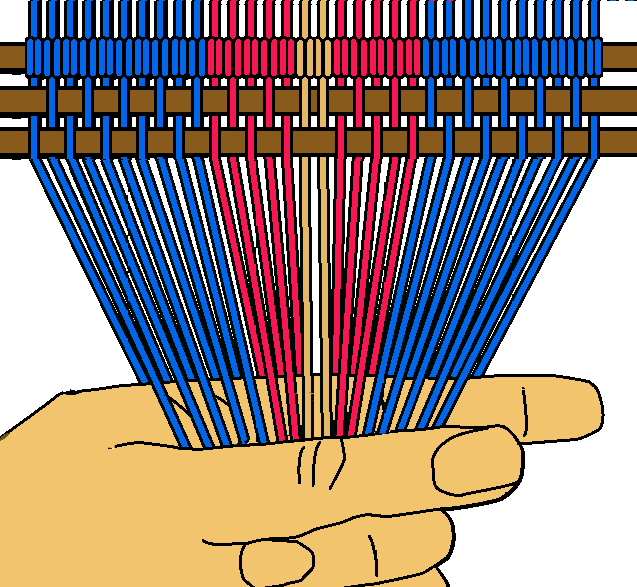
|
[OBSERVE] The barbs on both sides of the arrowhead have the same number of strands showing. The two sides of the arrowhead are mirror images. |

|
|
|
|
|
| Introduction |
|
Both middle warp strand in top layer of the shed. |
||
|
This part of the tutorial will present the steps for weaving the “mirror image point up” arrowhead pattern when the headstick configuration has both the middle warp strands in the top layer of the shed. Weaving will start on the right side of the work-piece.
[NOTE] The interlocks on the both sides of the work-piece are made with warp strands from the top layer of the shed. [NOTE] The weft strands from the two sides meet at the middle where they become the middle warp strands.
The left side weft strand will corss over two right side warp strands. [NOTE]The over two under two configuration of the middle warp strands results in the two sides being mirror images.
Elements that are mirror images can be easily added to the edges. |
||
|
The both middle warp strands are in the top layer of the shed.

|
[OBSERVE] The barbs on both sides of the arrowhead have the same number of strands showing. The two sides of the arrowhead are mirror images. |

|
| Previous Start | Next figure 3 |
Select the row 1 right side weft strand.
|
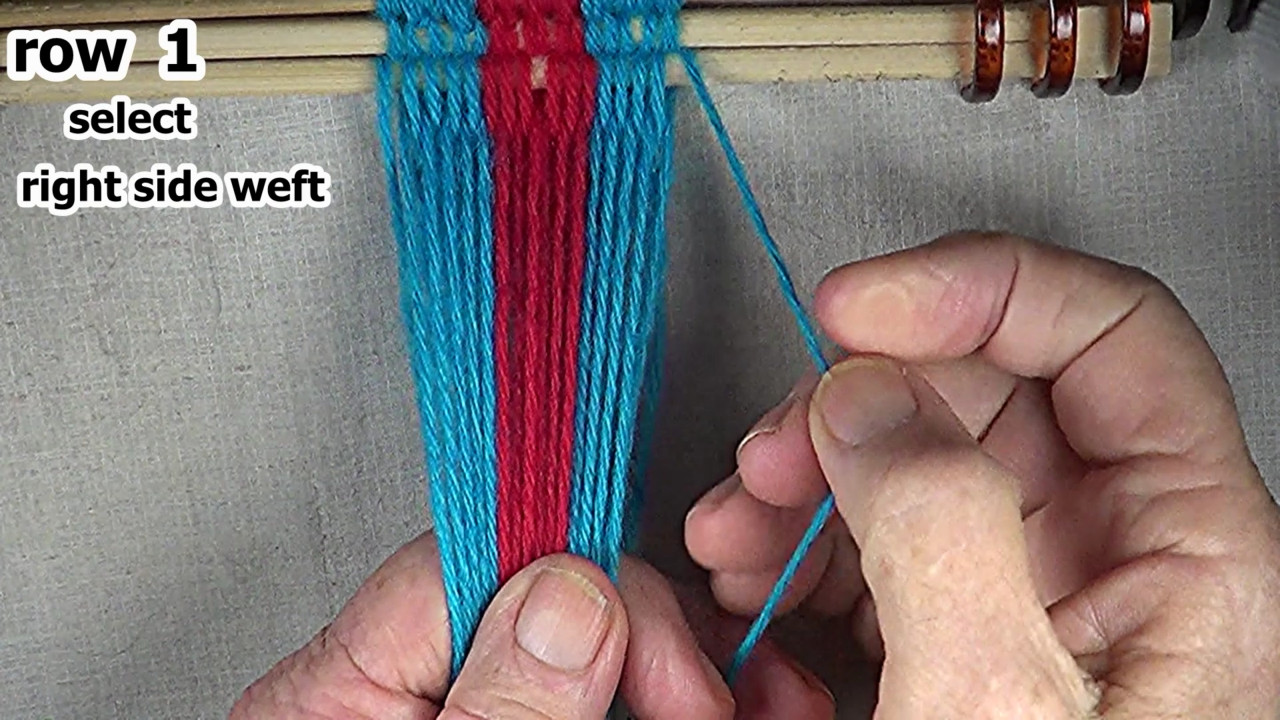
|
| Previous figure 1 | Next figure 4 |
| Pass the weft strand through the open shed to the middle of the warp strands that will become the arrowhead design. |
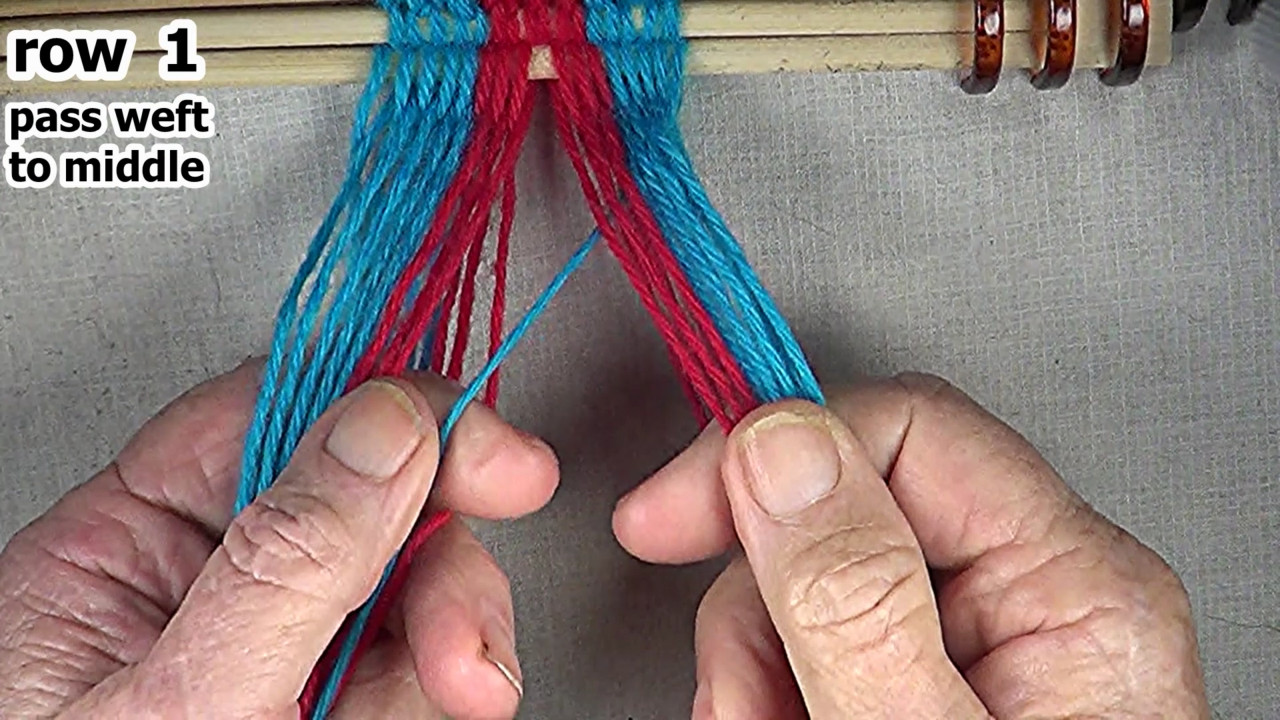
|
| Previous figure 3 | Next figure 5 |
Form the interlock in the row 1 right hand side weft strand.
Place the weft strand in the top layer of the shed. The warp strand that was to the right of the middle becomes the next segment of the row 1 right hand side weft strand. |
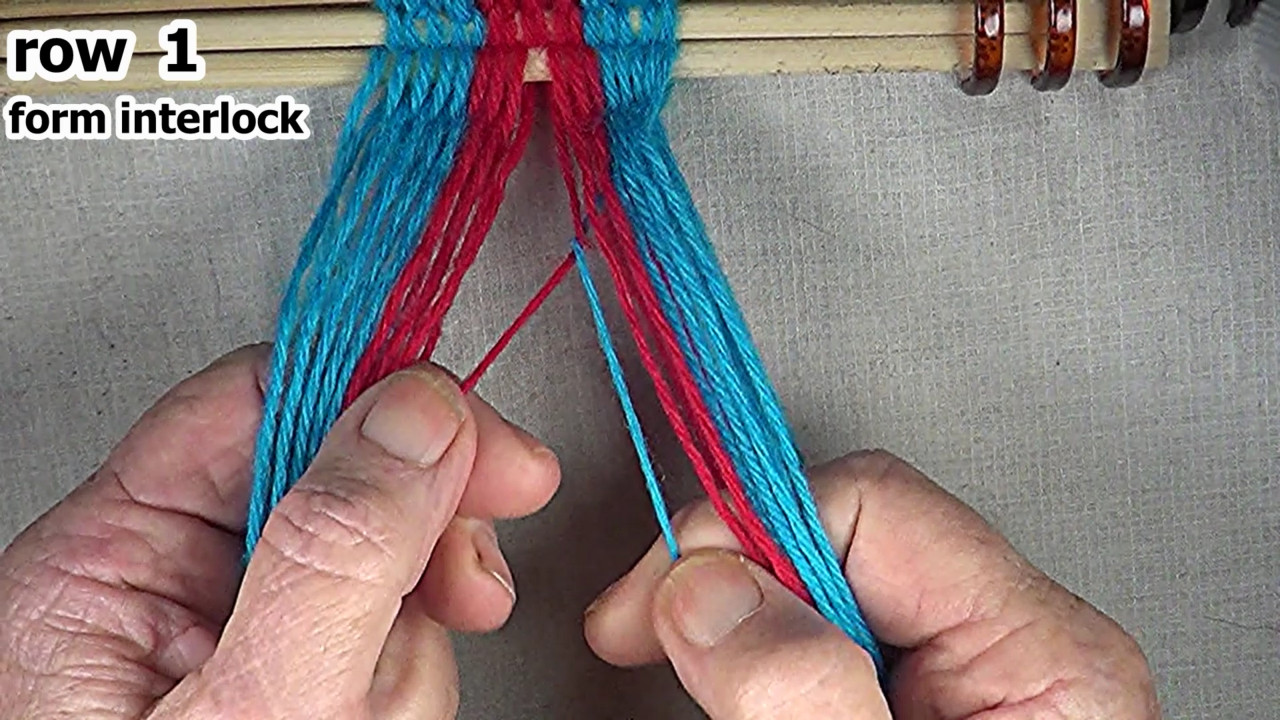
|
| Previous figure 4 | Next figure 6 |
Reverse the right hand side of the row 1 shed.
Work from the right hand edge of the work-piece to the middle of the shed. |
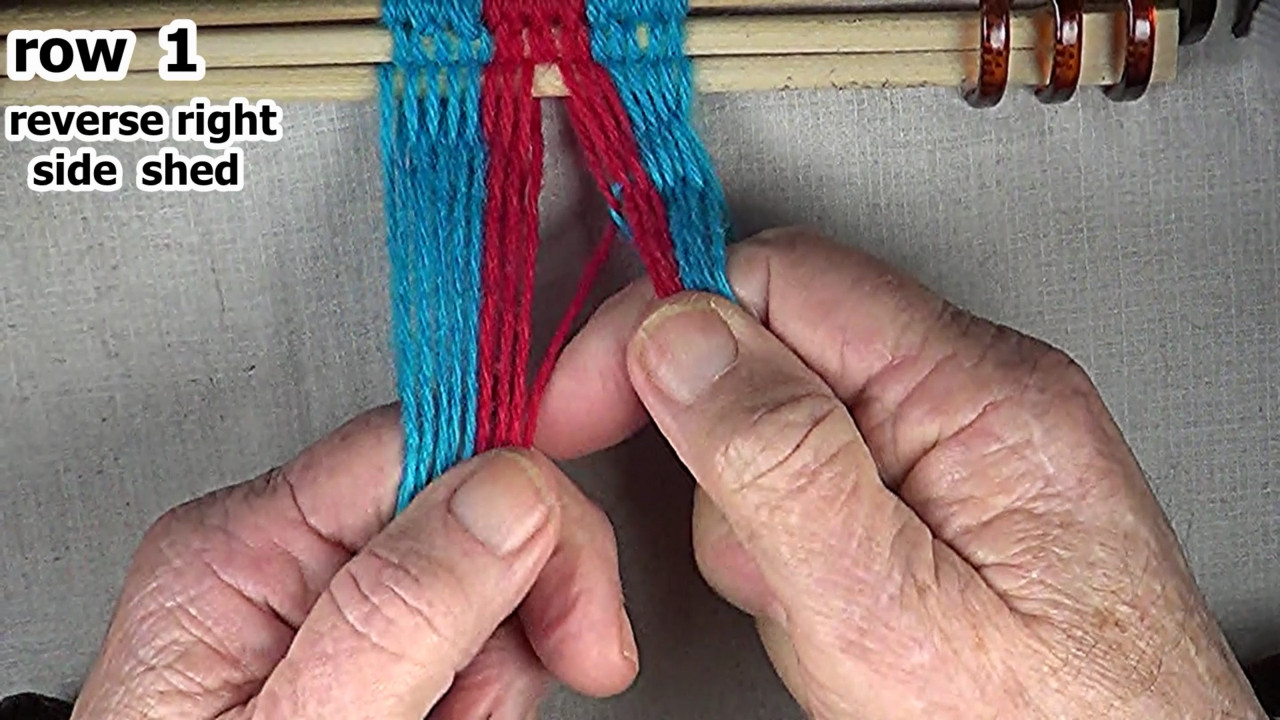
|
| Previous figure 5 | Next figure 7 |
Select the left hand side row 1 weft strand.
|

|
| Previous figure 6 | Next figure 8 |
| Pass the row 1 left hand side weft strand throught the open left hand side shed to the middle of the work-piece. |

|
| Previous figure 7 | Next figure 9 |
Form the interlock in the row 1 left hand side weft strand.
The warp strand that was to the left of the middle becomes the next segment of the row 1 left hand side weft strand. |
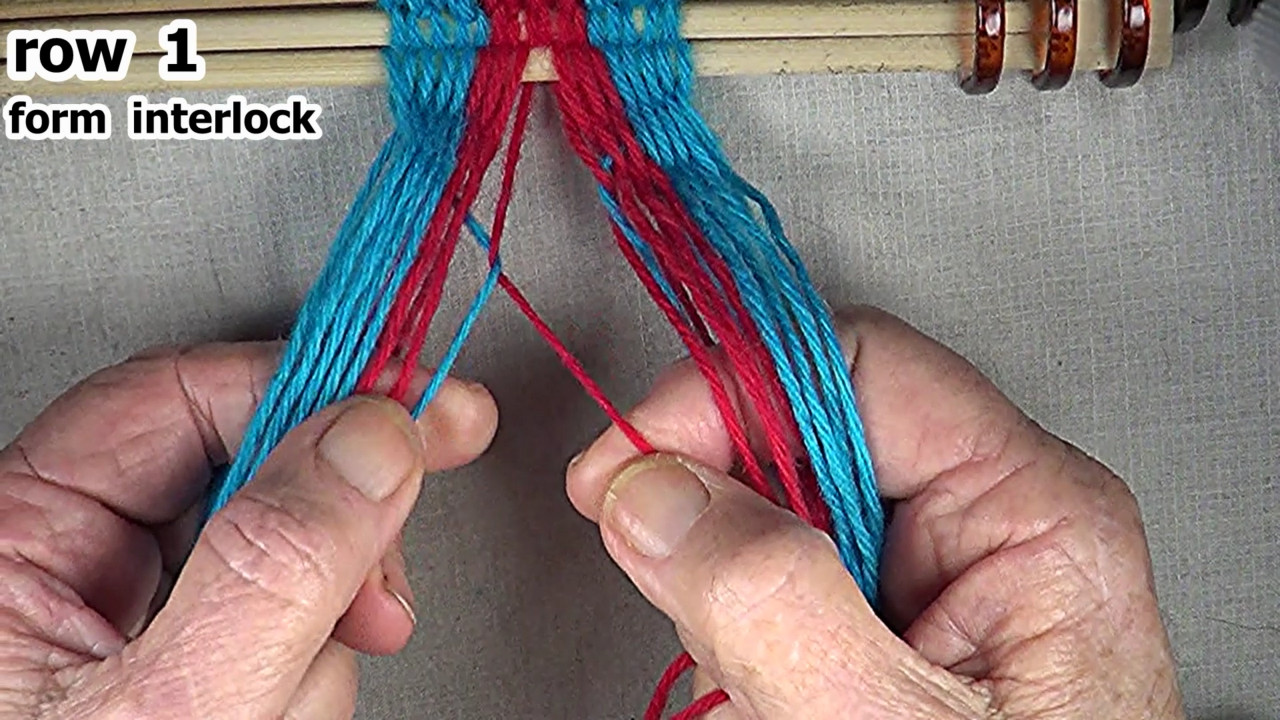
|
| Previous figure 8 | Next figure 10 |
Secure the row 1 middle warp strands.
Then place the right hand side weft strand in the top layer of the left hand side shed. Place the left hand side weft strand in the bottom layer of the right hand side shed. |
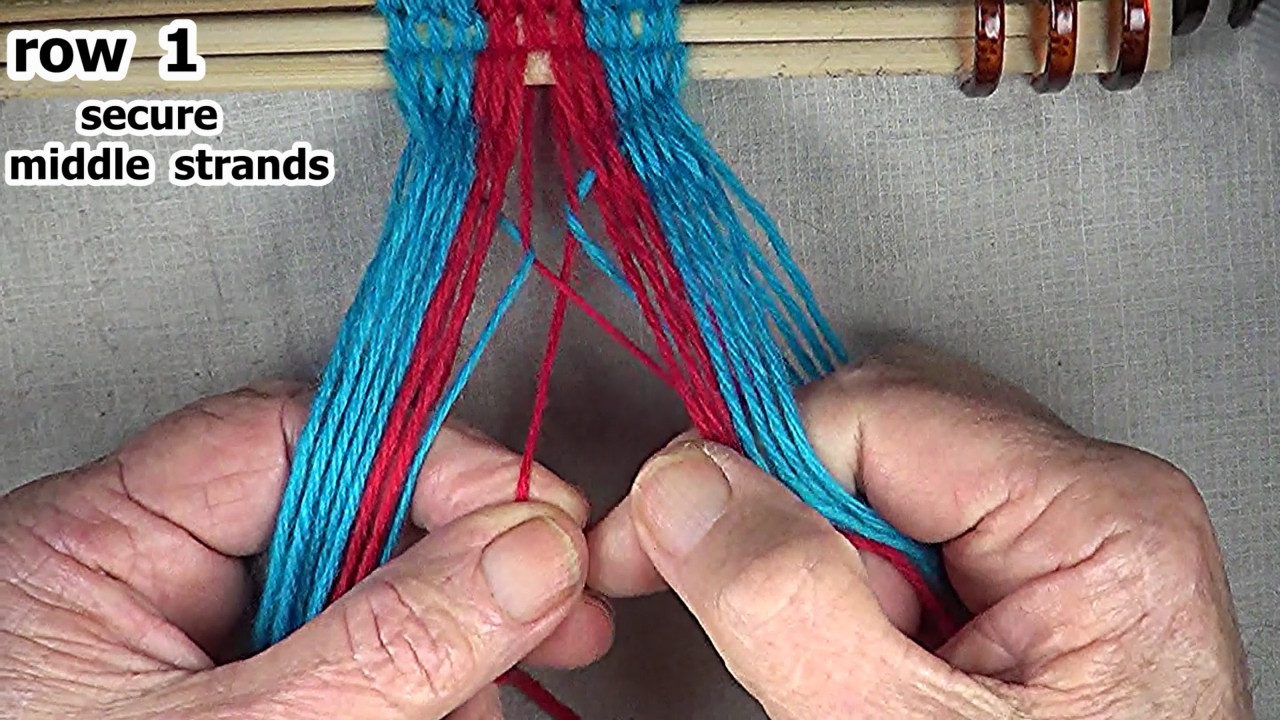
|
| Previous figure 9 | Next figure 11 |
|
Reverse the shed on the left hand side of row 1.
Transfer the shed to the index finger of the right hand. Reverse the left hand side shed by working from the left hand edge of the work-piece to the middle of the shed. Transfer the right hand side shed to the index finger of the left hand . |
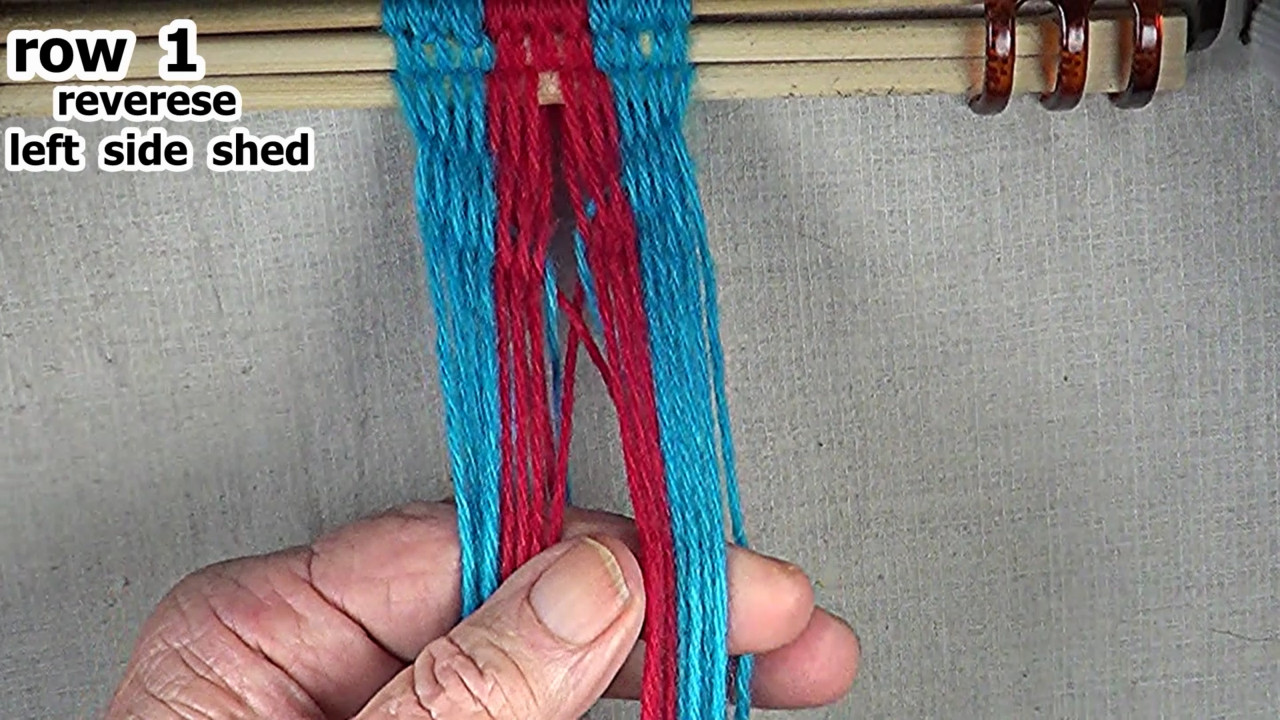
|
| Previous figure 10 | Next figure 12 |
Set the row 1 weave.
Check individual strands to see that they are snug and even. [TIP] Use index finger as a beater. |
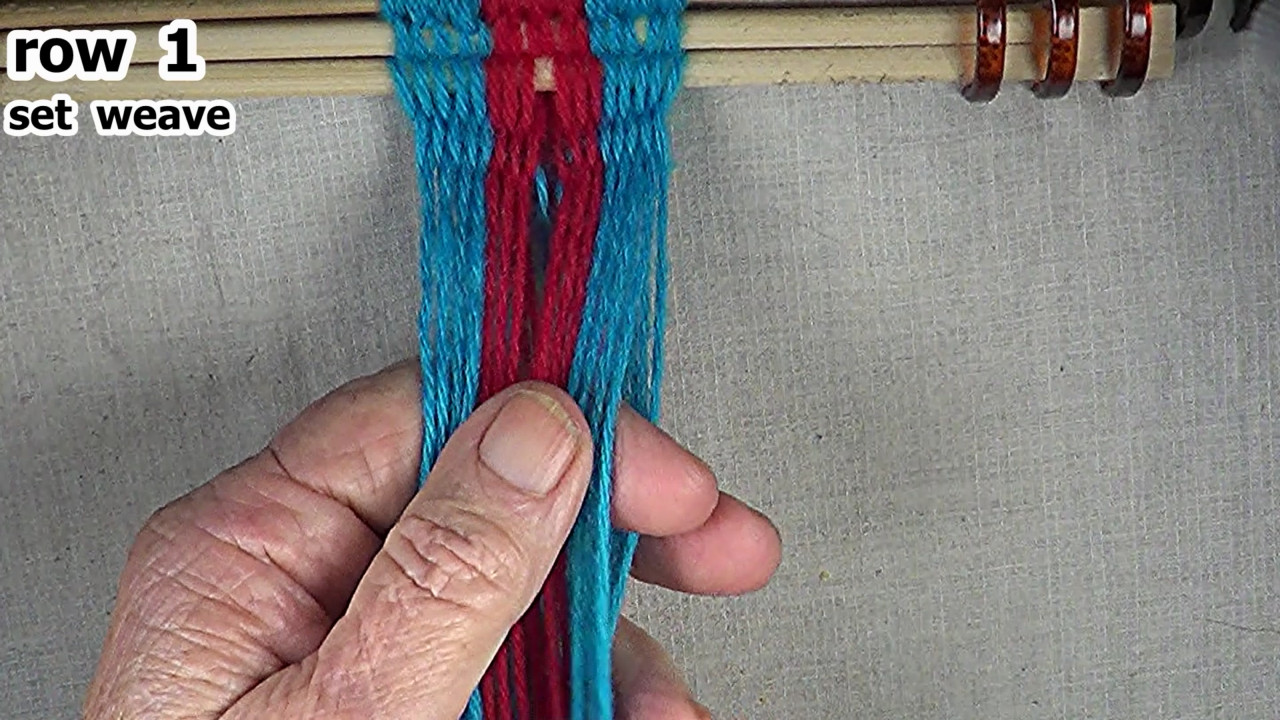
|
| Previous figure 11 | Next figure 13 |
Select the row 2 right right side weft strand.
|
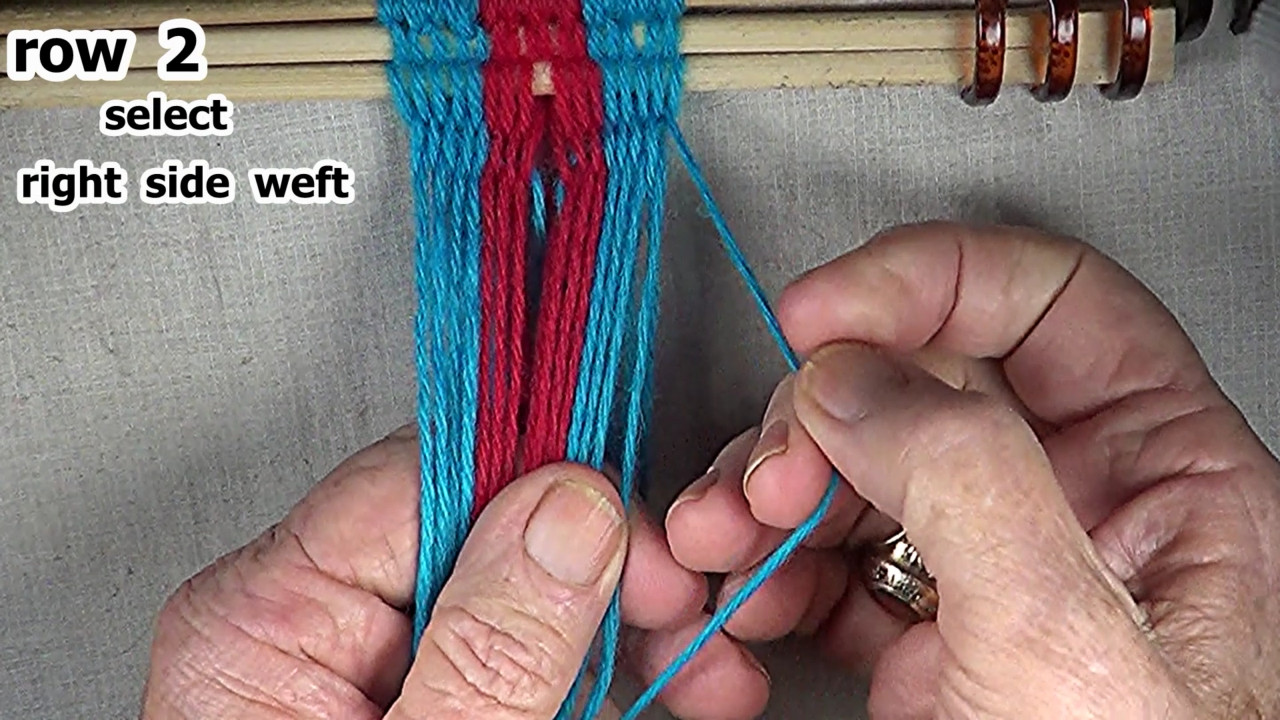
|
| Previous figure 12 | Next figure 14 |
| Pass the row 2 weft strand through the open shed to the right hand side interlock in row 1. |
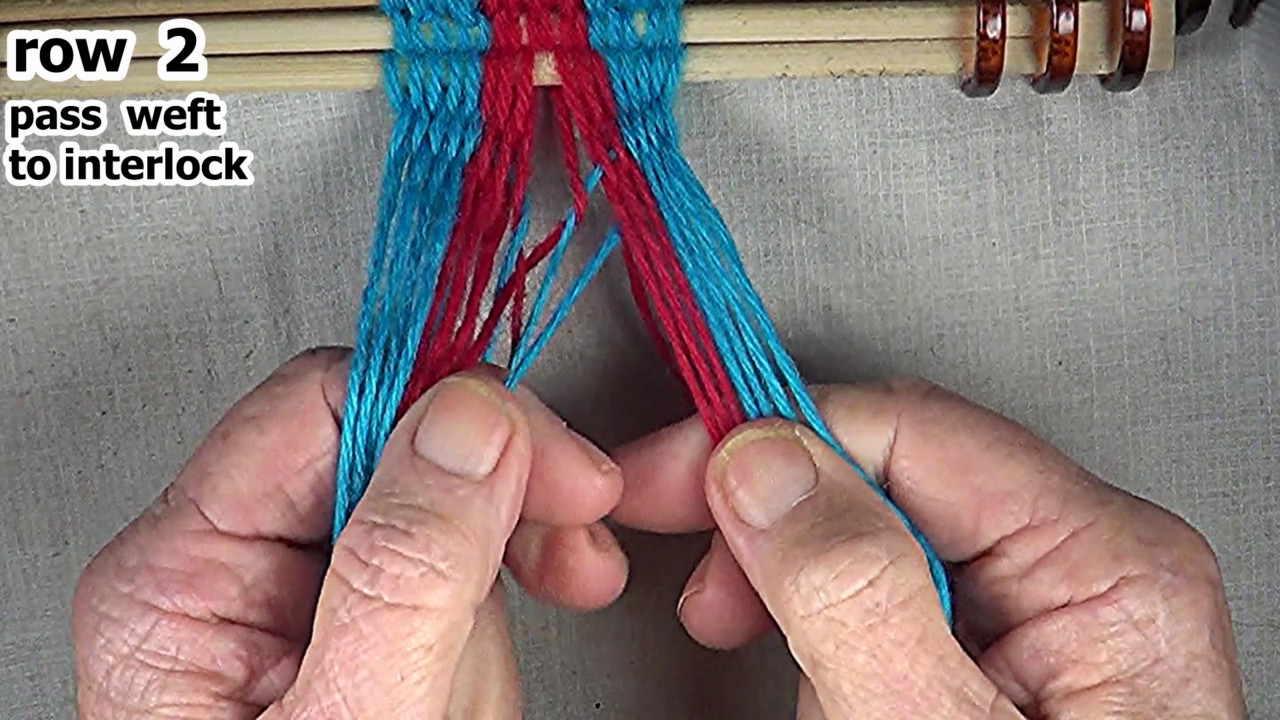
|
| Previous figure 13 | Next figure 15 |
Form row 2 right side weft strand interlock.
Place the weft strand in the top layer of the shed. When the weft strand is placed in the top layer of the shed the weft strand becomes a warp strand. The interlocked warp strand becomes the next part of the right hand side weft strand. |
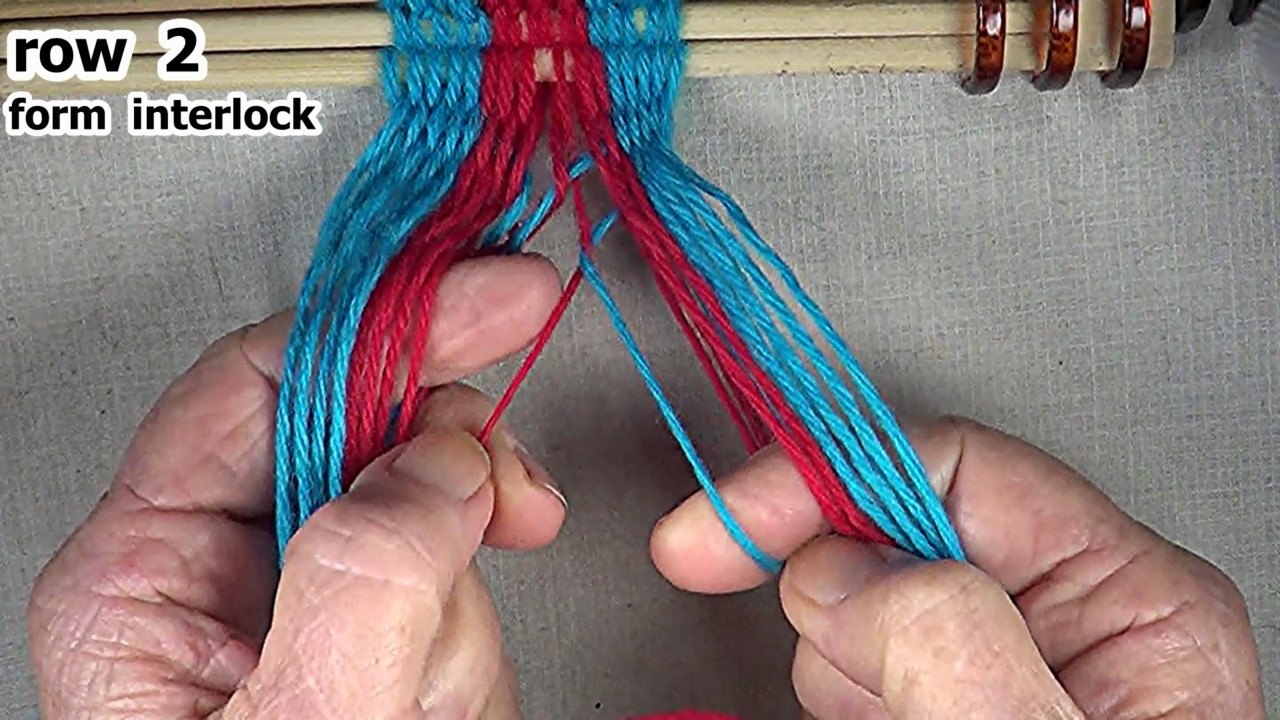
|
| Previous figure 14 | Next figure 16 |
Pass the second part of the row 2 weft strand to the middle of the work-piece.
The row 2 weft strand becomes the left hand side middle warp strand. Check to see if the over/under configuration is maintained. |
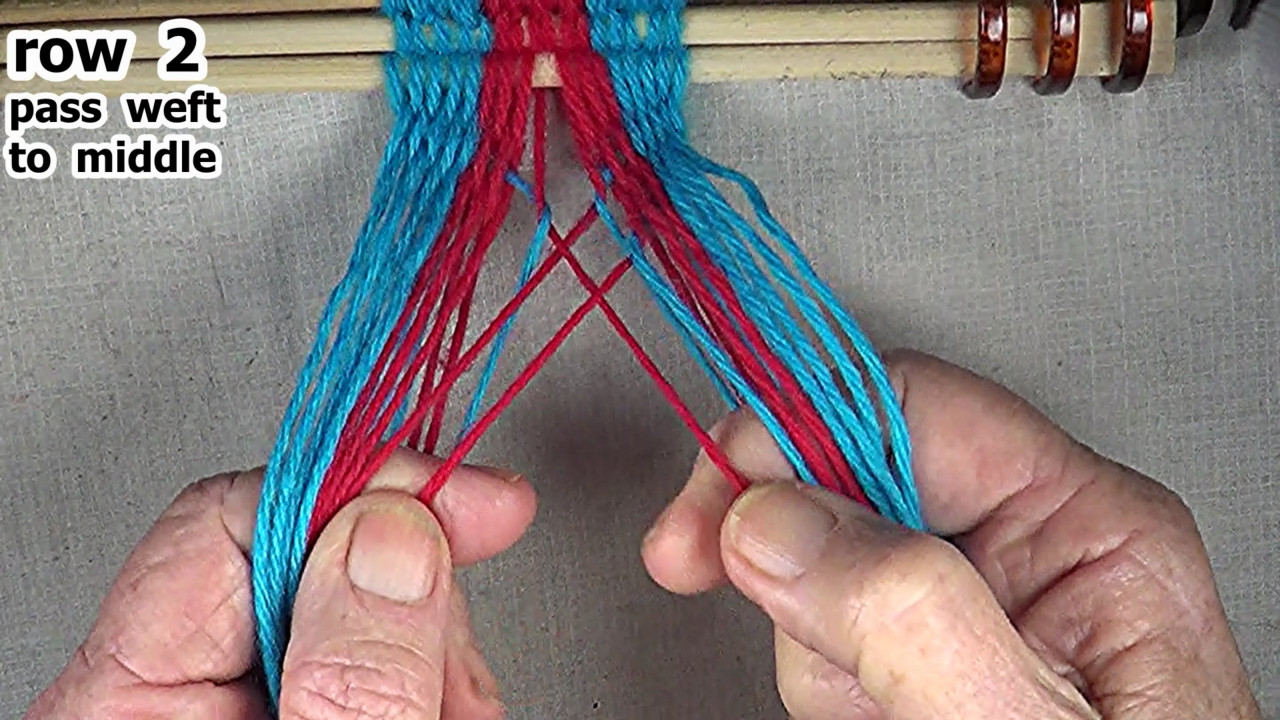
|
| Previous figure 15 | Next figure 17 |
Reverse the shed on the right hand side of row 2.
Transfer the right hand side shed to the index finger of the left hand. Work from the righ hand edge of the work-piece to the middle of the shed. The right hand weft strand becomes the left side middle warp strand. |
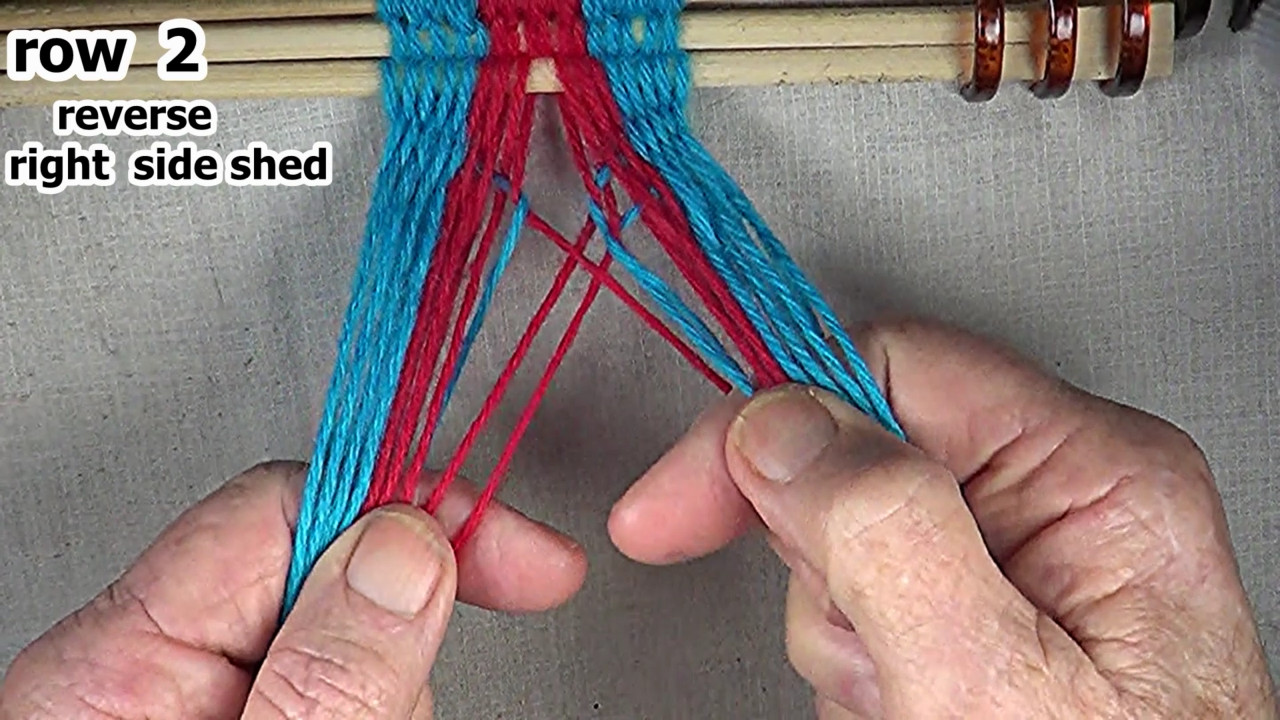
|
| Previous figure 16 | Next figure 18 |
Select the first part of the left hand side row 2 weft strand.
|
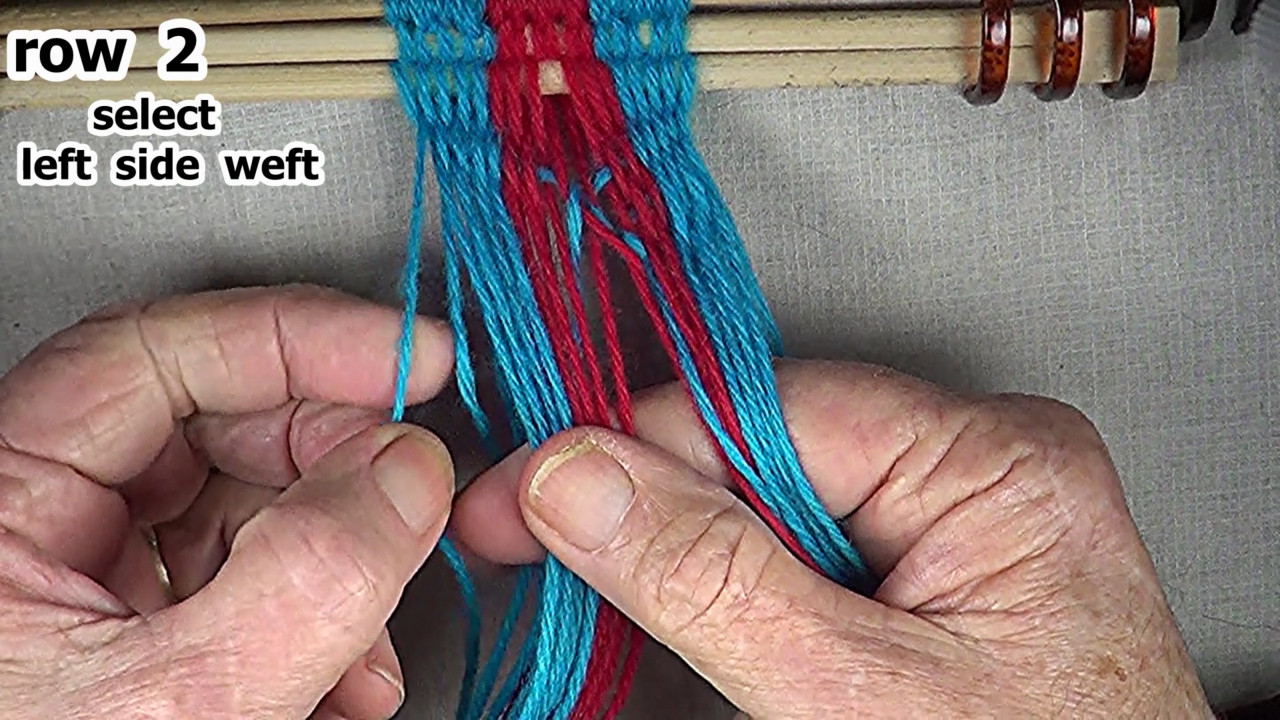
|
| Previous figure 17 | Next figure 19 |
| Pass the row 2 left side weft strand through the open shed to the row 1 interlock. |
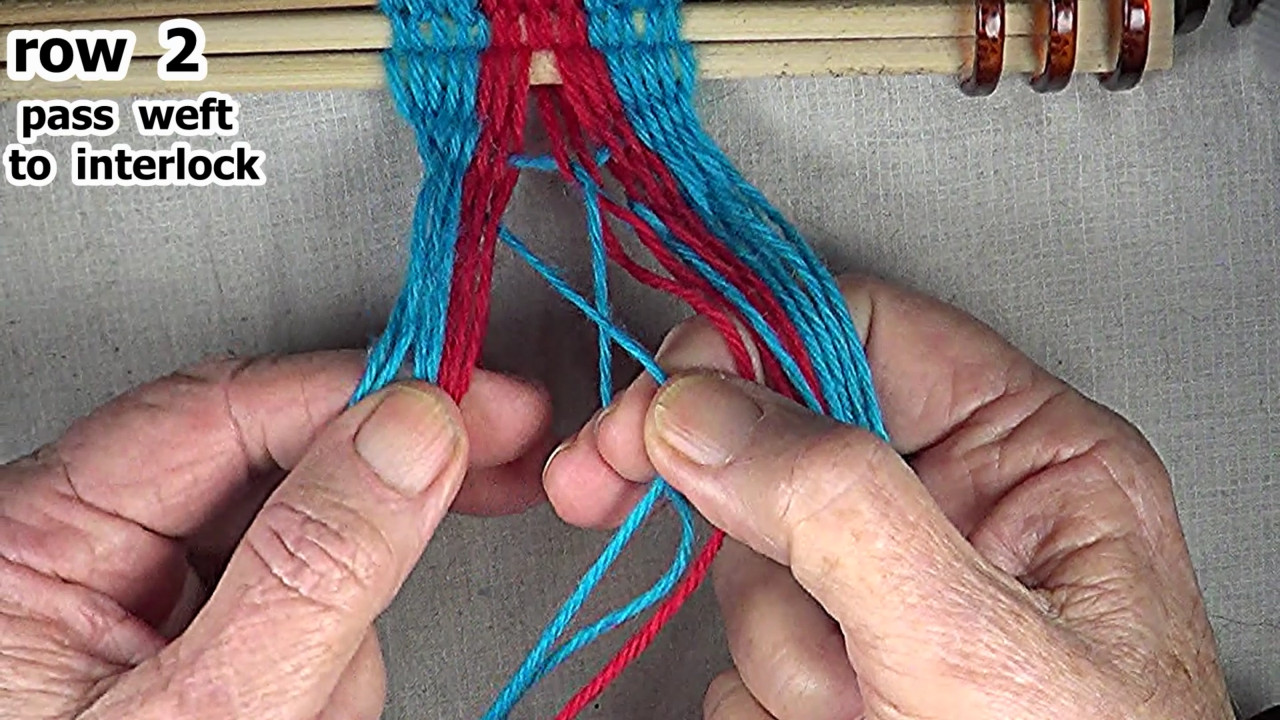
|
| Previous figure 18 | Next figure 20 |
Form the interlock on the left hand side of the row 2 weft strand.
Place the weft strand in the top layer of the shed. When the weft strand is placed in the top layer, the weft strand becomes a warp strand. The warp strand that was next to the first interlock becomes the next part of the left side weft strand. |
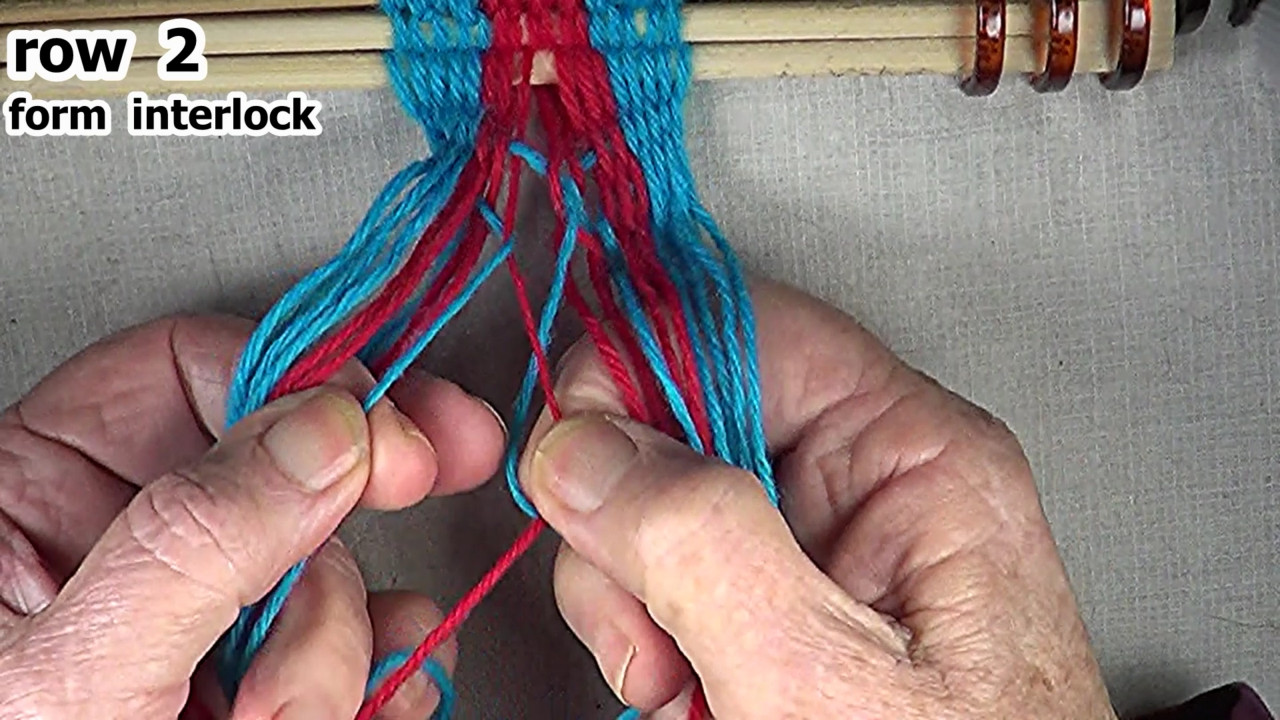
|
| Previous figure 19 | Next figure 21 |
|
Pass the row 2 left weft strand through the shed to the middle of the work-piece.
Then secure the row 2 middle strands.
|
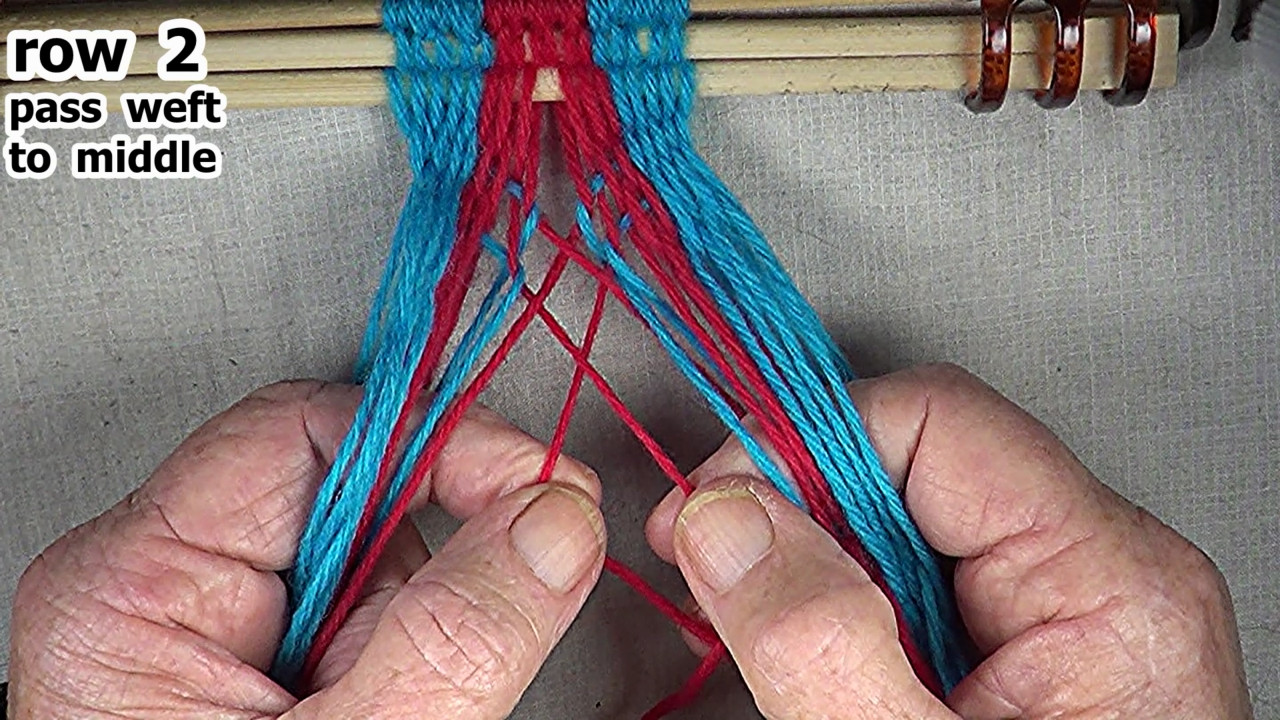
|
| Previous figure 20 | Next figure 22 |
Reverse shed on the left hand side of row 2 .
Work from the left hand edge of the work-piece to the middle of the work-piece. Transfer the shed to the left index finger. |
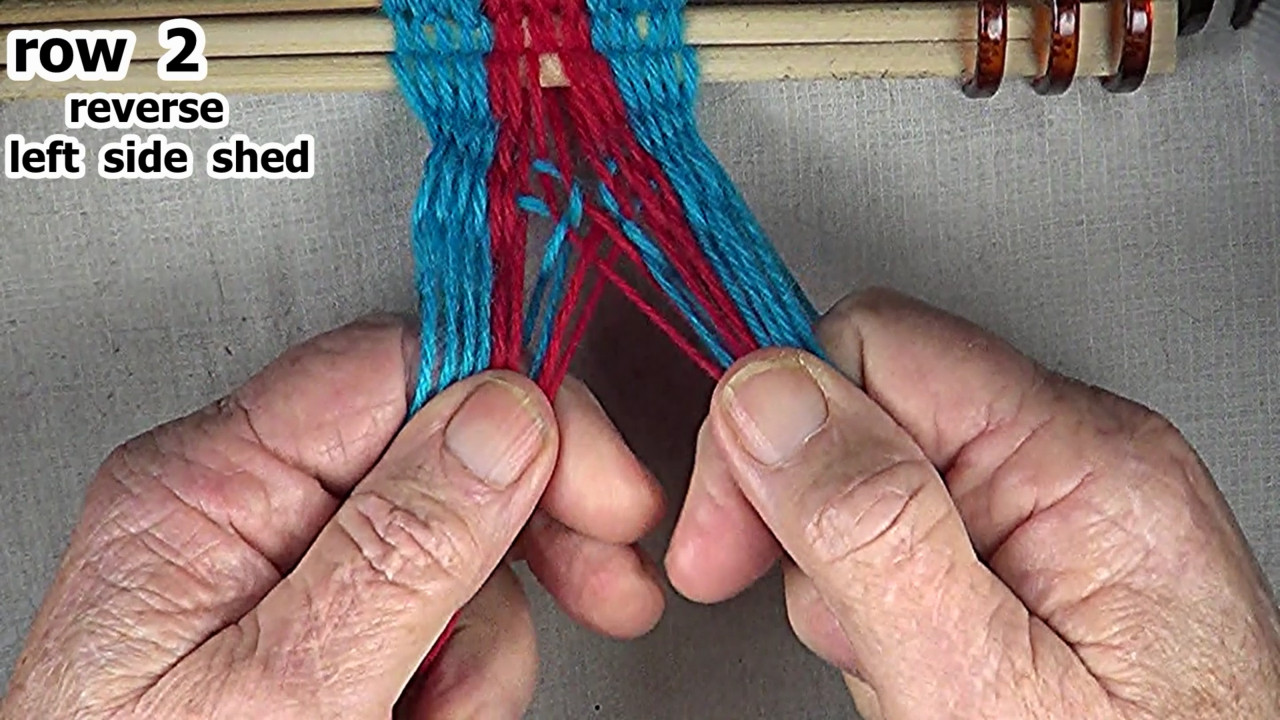
|
| Previous figure 21 | Next figure 23 |
Set the row 2 weave.
Check individual strands to see that they are snug and even. [TIP] Use index finger as a beater. |

|
| Previous figure 22 | Next figure 24 |
Weave the right side of row 3.
|
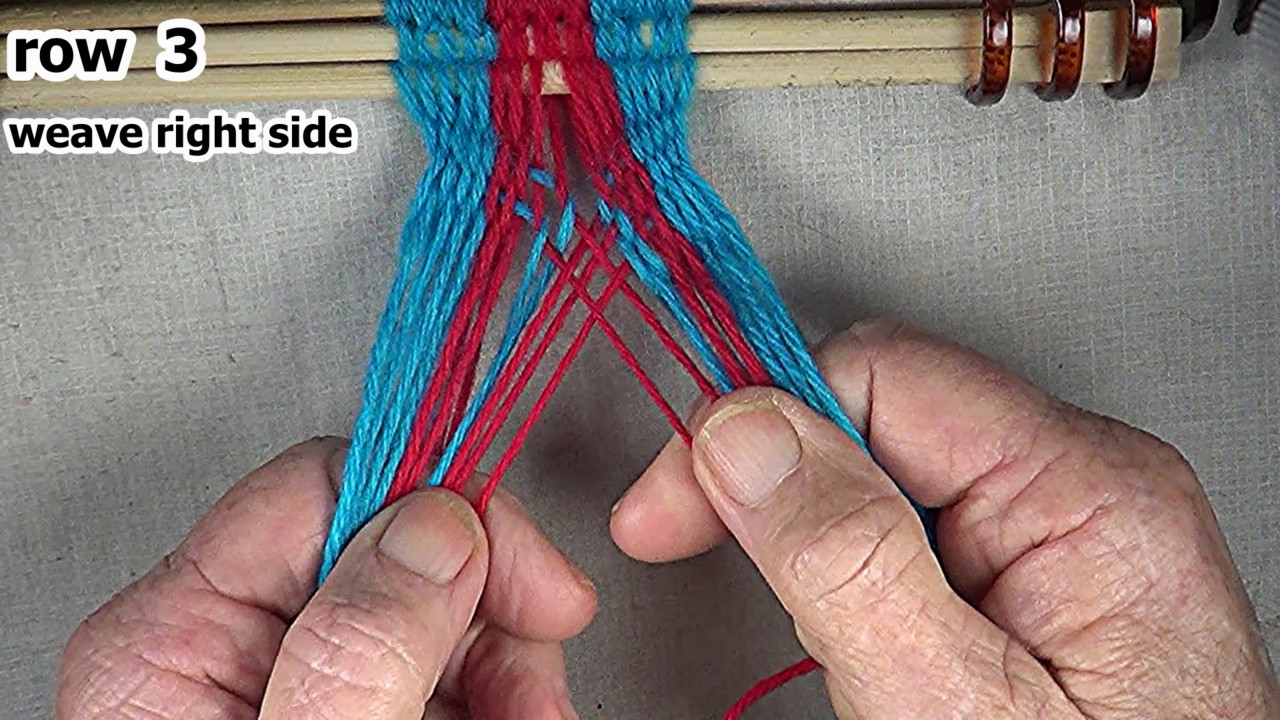
|
| Previous figure 23 | Next figure 25 |
Weave the left side of row 3.
|
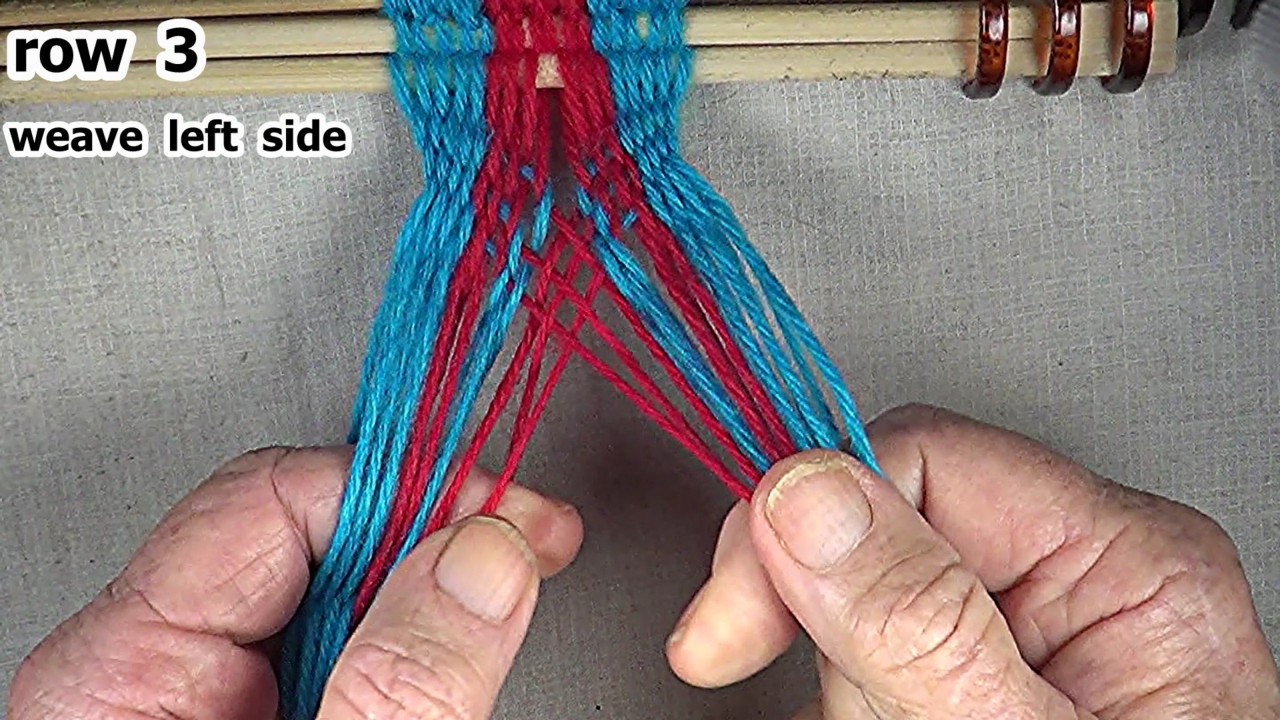
|
| Previous figure 24 | Next figure 26 |
| Weave row 4. The same sequesence of weaving steps are requires as used for row 3. |
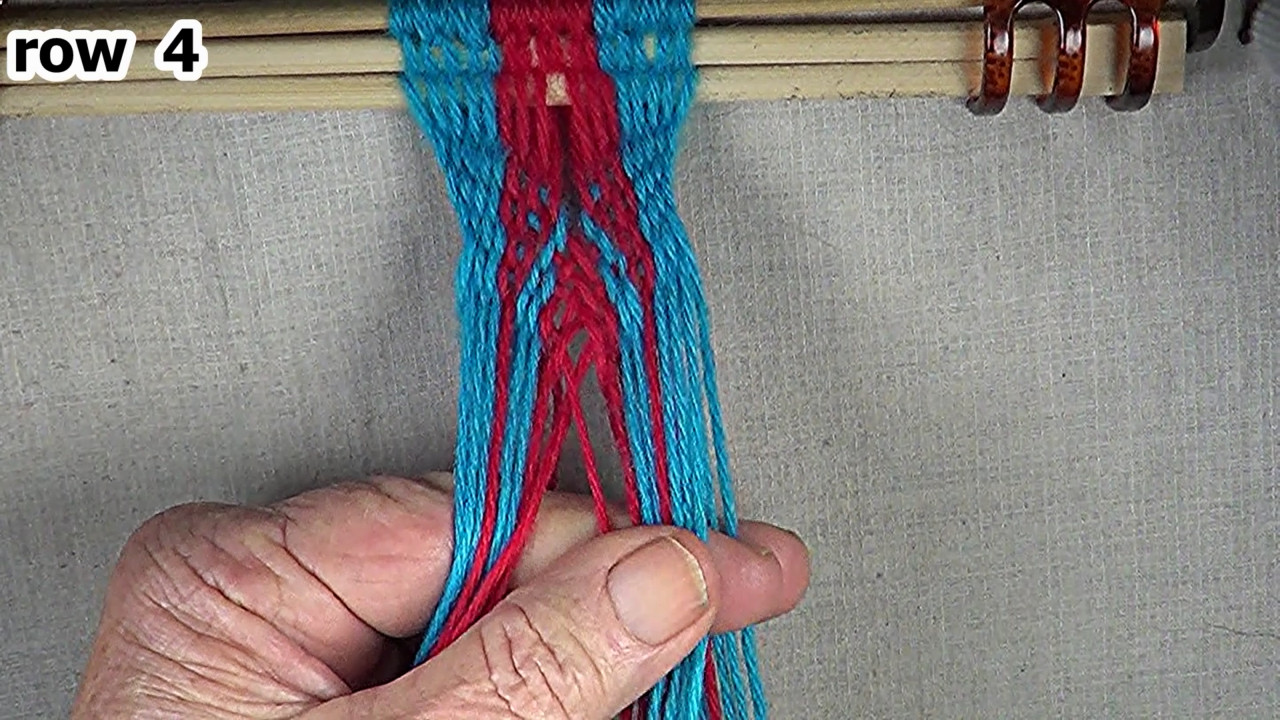
|
| Previous figure 25 | Next figure 27 |
| Weave row 5. The same sequesence of weaving steps are requires as used for row 4. |
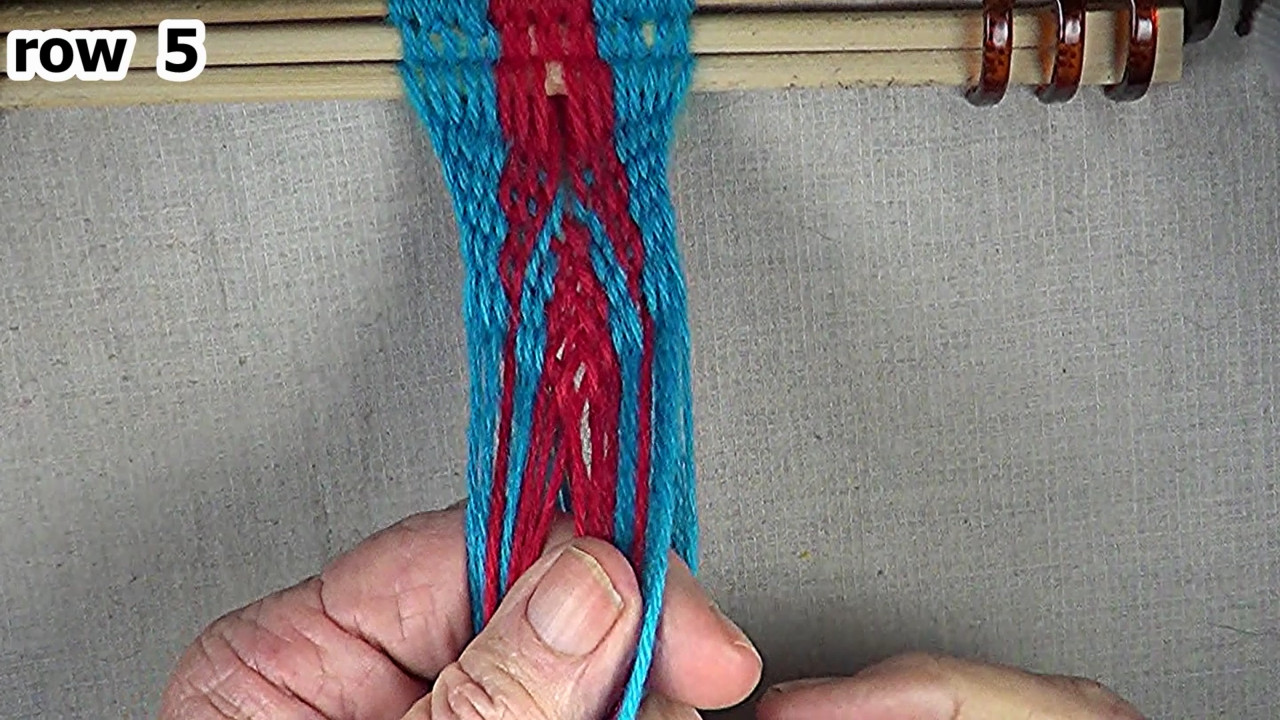
|
| Previous figure 26 | Next figure 28 |
|
Row 6 requires the same sequesence of weaving steps as row 5.
This completes the first segment of the arrowhead pattern. [OBSERVE] Each segment is composed of two parts of the arrowhead.
|

|
| Previous figure 27 | Next figure 29 |
|
Segment 2 of arrowhed pattern.
[NOTE] To produce a complete arrowhead designe, two segments of the basic patter are required. Continue adding segments untill the work-piece is the desired length |
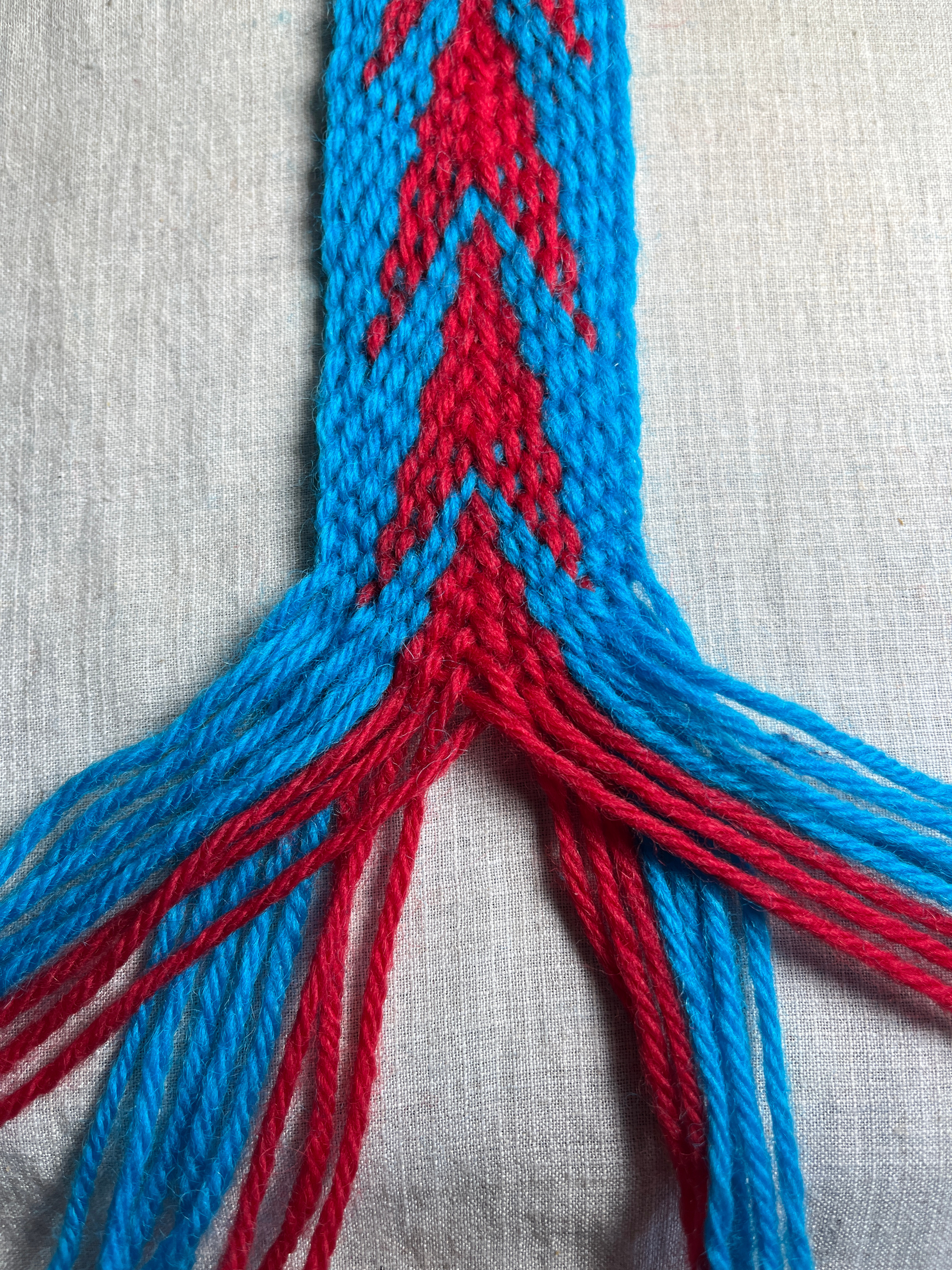
|
| Previous figure 28 |
|
|